View all 4 pictures
On May 12, 1940, German troops entered the province of Friesland from Groningen and Frederiksoord-Noordwolde. The Wonsstelling, consisting of simple field fortifications of wood and earth, was quickly overrun and in the evening the whole province of Friesland was captured by the Germans.
The next day, the Germans launched fierce attacks on the Casemates at Kornwerderzand, which were to protect the Frisian "ramp" of the Afsluitdijk, which consisted of a defense system of roadblocks and modern casemates. The Dutch soldiers in the position repulsed a German attack in which many were wounded.
Because of this, a frightened conscript soldier call…
On May 12, 1940, German troops entered the province of Friesland from Groningen and Frederiksoord-Noordwolde. The Wonsstelling, consisting of simple field fortifications of wood and earth, was quickly overrun and in the evening the whole province of Friesland was captured by the Germans.
The next day, the Germans launched fierce attacks on the Casemates at Kornwerderzand, which were to protect the Frisian "ramp" of the Afsluitdijk, which consisted of a defense system of roadblocks and modern casemates. The Dutch soldiers in the position repulsed a German attack in which many were wounded.
Because of this, a frightened conscript soldier called the Afsluitdijk the “Totendamm”, but Kornwerderzand held out and held on. On May 14, 1945, Rotterdam was heavily bombed and the enemy threatened that several large cities in the west and center of the country would suffer the same fate. The Dutch armed forces – at least that part that could not escape elsewhere – laid down their arms and the German occupation of the Netherlands was a fact.
During this cycle route you will pass both the Wonsstelling and the casemates at Kornwerderzand, taking you back to the May days of 1940.
Have fun!
On Kornwerderzand at the head of the Afsluitdijk are the famous casemates, largely hidden under sand. Within the metre-thick walls, the period before and from May 1940 is revived.
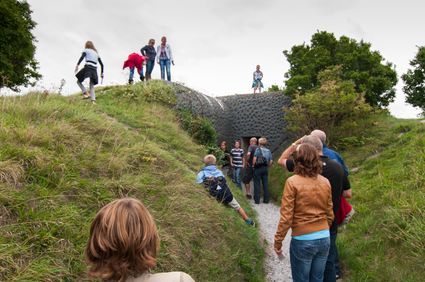
Bij het monument aan de kade in Makkum wordt de herinnering aan Tijmen en Aart van den Berg in ere gehouden. Tijdens de Tweede Wereldoorlog hadden de twee broers een palingrokerij, die tevens diende als dekmantel voor hun verzetsdaden.
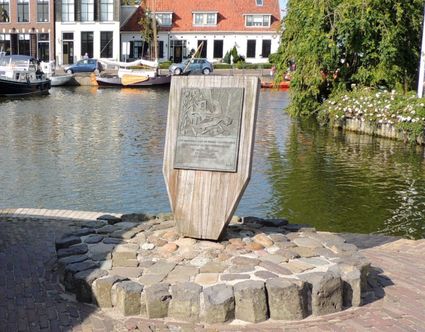
In de nacht van 6 juli 1944 was de Lockheed Hudson van haar basis Gibraltar Farm, Tempsford met vier geheime agenten onderweg naar de Appelsche Heide bij Nijkerk. Een Duitse nachtjager onderschepte het toestel en hierdoor crashte het in het IJsselmeer.
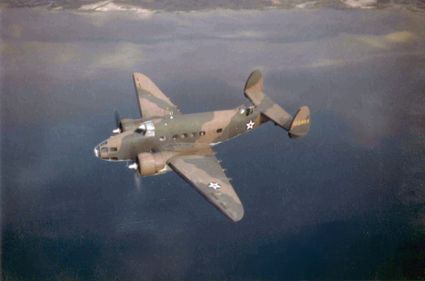
Het dorp Wons speelde een belangrijke rol tijdens de inval van het Duitse leger in 1940. Dit had te maken met haar ligging tegenover de Afsluitdijk. De Wonsstelling was de laatste hindernis voordat de Duitse troepen de Afsluitdijk bereikten.
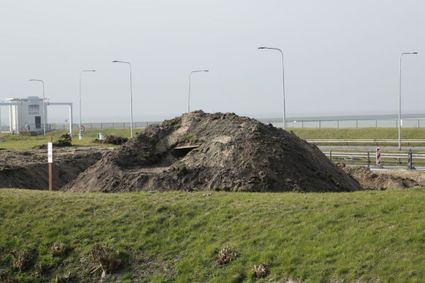
In Wons staat het monument voor het Canadese regiment Queen's Own Rifles of Canada. Dit regiment was verantwoordelijk voor de bevrijding van Wons op 16 april 1945.
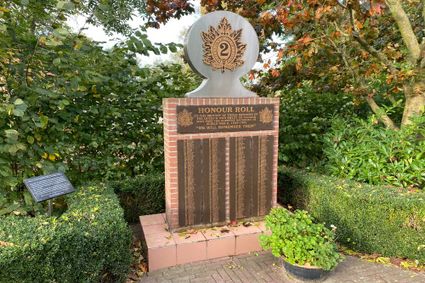

Wildinghelaan 1
8747 NL Wons
Na de bevrijding van Sneek op 15 april 1945 trokken Canadese troepen naar de Afsluitdijk. Het Friese verzet raadde de aanval af. Het herinnerde zich de meidagen aan het begin van de oorlog, hevige gevechten volgden voor Wons en Pingjum.
Na de bevrijding van Sneek op 15 april 1945 trokken Canadese troepen naar de Afsluitdijk. Het Friese verzet raadde de aanval af. Het herinnerde zich de meidagen aan het begin van de oorlog, hevige gevechten volgden voor Wons en Pingjum.
Nadat de Canadezen feestelijk Leeuwaren waren binnengetrokken, was het zaak om snel door te stoten naar Franeker om de laatste ontsnappingsmogelijkheid van de Duitsers over de Afsluitdijk en het IJsselmeer te verhinderen. Vanuit het zuidoosten werd op 16 april de aanval tegen de Afsluitdijk ingezet, maar al snel liepen de Queens Own Rifles met hun tanks tegen de sterke Duitse verdediging aan.
Daarna werd het dorp Wons omsingeld, maar de Duitsers verweerden zich, met name bij Pingjum bijzonder fanatiek. Er waren veel sluipschutters actief en de Canadezen werden vanuit boerderijen onder vuur genomen. Om de Duitse weerstand te breken werden geallieerde vliegtuigen en artillerie ingezet. Bij de beschieting gingen vijf boerderijen in vlammen op, zes burgers, één Canadees en 46 Duitsers kwamen om het leven. Op 18 april 1945 konden de Canadezen melden dat het gehele gebied van vijanden was gezuiverd.
Deze locatie is onder andere onderdeel van de fietsroute ‘Meidagen 1940’ in het kader van het thema Strijd om de Wadden.

Na de bevrijding van Sneek op 15 april 1945 trokken Canadese troepen naar de Afsluitdijk. Het Friese verzet raadde de aanval af. Het herinnerde zich de meidagen aan het begin van de oorlog, hevige gevechten volgden voor Wons en Pingjum.

Vaak wordt vergeten dat de opvarenden van de Nederlandse koopvaardij tijdens de Tweede Wereldoorlog een belangrijke bijdrage leverden aan de geallieerde oorlogsvoering.

De bunkers bij Harlingen maakten deel uit van de Atlantikwall: de ruim 6.000 kilometer lange Duitse verdedigingslinie van Noorwegen tot Spanje. De Atlantikwall geldt als een van de grootste bouwwerken van de 20e eeuw.
De bunkers bij Harlingen maakten deel uit van de Atlantikwall: de ruim 6.000 kilometer lange Duitse verdedigingslinie van Noorwegen tot Spanje. De Atlantikwall geldt als een van de grootste bouwwerken van de 20e eeuw.
De linie werd tijdens de Tweede Wereldoorlog gebouwd tussen 1942 en 1945 om een geallieerden invasie van het West-Europese vasteland vanuit zee onmogelijk te maken. De Atlantikwall was een serie losstaande, zelfstandige en aan alle kanten te verdedigen kleinere en grotere steunpunten die elkaar vuurondersteuning konden geven.
In veel gevallen bestonden ze uit bomvrije bunkers, soms met een muur- en dak dikte van zeker twee meter gewapend beton. Door gebrek aan arbeidskrachten, materieel en brandstof waren er vanaf 1 mei 1943 in Nederland slechts 510 bunkers van de geplande 2000 opgeleverd. In de Engelse Tuin in Harlingen ligt een Duitse bunker die onderdeel uitmaakte van de Atlantikwall. Het betreft een Commandopost Verbindingen waarmee de Duitsers de Friese kustverdediging controleerden.
Deze locatie is onder andere onderdeel van de fietsroute ‘Meidagen 1940’ in het kader van het thema Strijd om de Wadden.
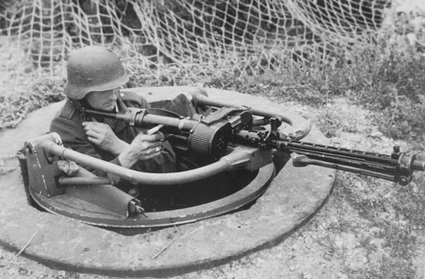
De bunkers bij Harlingen maakten deel uit van de Atlantikwall: de ruim 6.000 kilometer lange Duitse verdedigingslinie van Noorwegen tot Spanje. De Atlantikwall geldt als een van de grootste bouwwerken van de 20e eeuw.

Als antwoord op de luchtaanvallen op onder meer Londen gaf de Britse regering de opdracht om Duitse steden en industriegebieden te bombarderen. Op hun bombardementsvluchten naar Duitsland gebruikten de geallieerden het IJsselmeer als aanvliegroute.

Vanuit Leeuwarden spoedde een van de Canadese bataljons zich in westelijke richting om Harlingen te bevrijden. Verder dan Franeker kwamen zij die zondagmiddag 16 april niet.
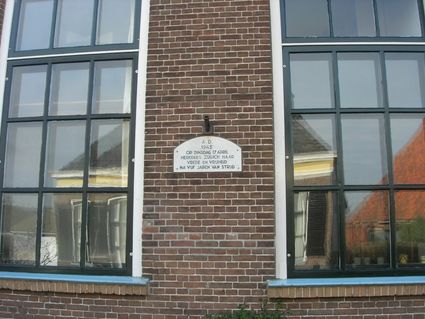
On Kornwerderzand at the head of the Afsluitdijk are the famous casemates, largely hidden under sand. Within the metre-thick walls, the period before and from May 1940 is revived.
